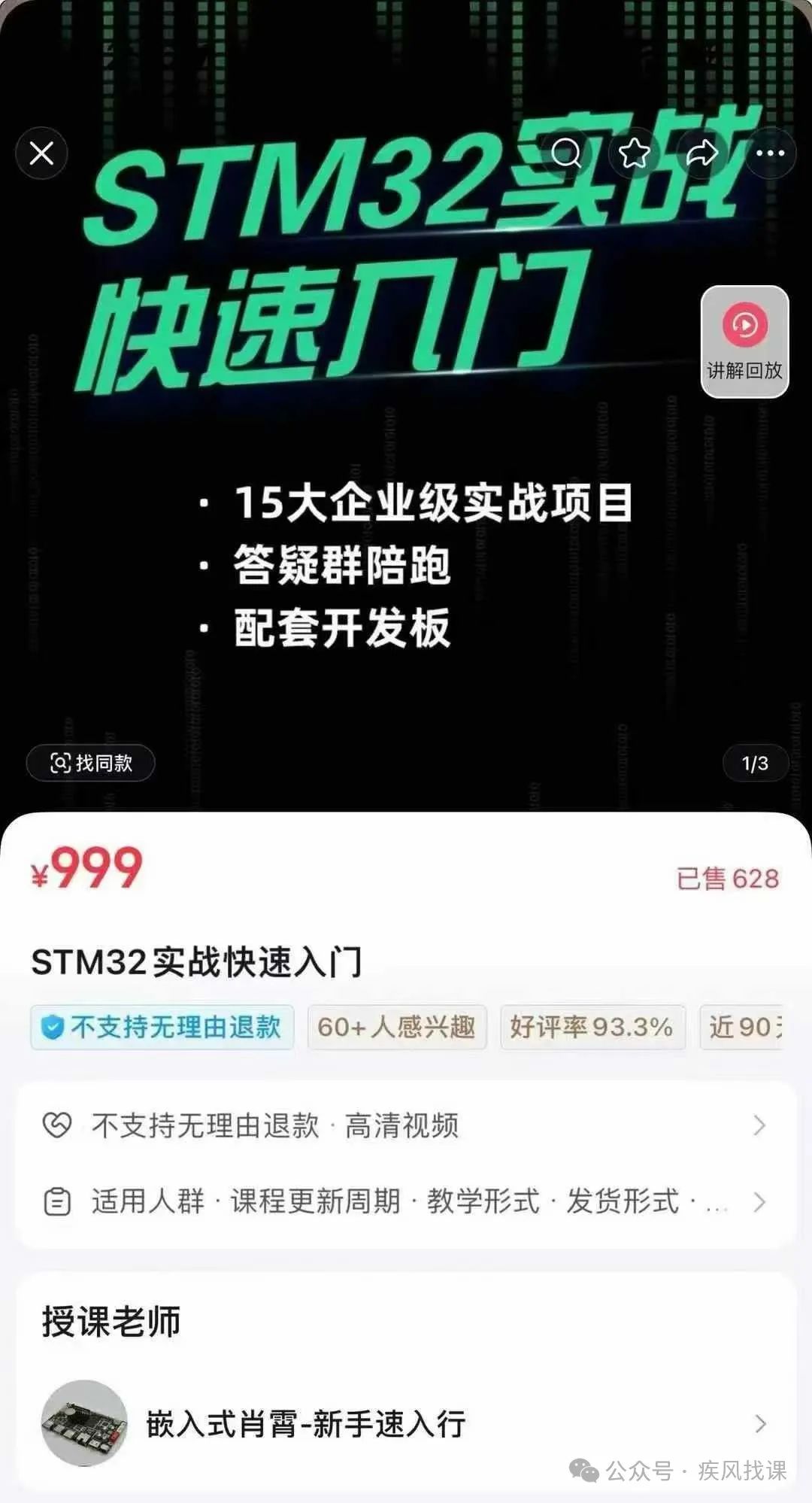

1. Follow the above Jifeng Find Course WeChat official account, and click 【Like】 and 【Looking】
2. Enter 【Receive Course】 in the WeChat official account to obtain the materials for this guide.
Resources are from Baidu Cloud Drive
Embedded STM32 Practical Application Quick Start

Embedded STM32 Practical Application Quick Start
STM32 is a 32-bit microcontroller developed by STMicroelectronics, widely used in embedded systems, IoT devices, robotics, and more. For embedded developers, mastering practical skills with STM32 is essential. The following is a quick start guide for STM32 practical application, aimed at helping beginners quickly get started with STM32 development.
1. Setting Up the STM32 Development Environment
- Selecting a Development Board
:
-
STM32 includes many models; beginners can choose a cost-effective development board like the STM32F103 series. -
Both core boards and development boards are available; core boards are simpler and suitable for beginners, while development boards have rich resources for more complex project development.
- STM32CubeMX
: STM32CubeMX is a graphical software configuration tool provided by ST to simplify project setup and initialization for STM32 microcontrollers. - Keil MDK
: Keil MDK is an embedded software development environment provided by Keil, integrating programming, compiling, and debugging. - Other Tools
: Such as serial programming tools, ST-Link debugging tools, etc.
-
After installing STM32CubeMX and Keil MDK, generate a project template using STM32CubeMX and configure the clock, peripherals, etc. -
Open the generated project in Keil MDK for code writing and debugging.
2. Learning Basic Knowledge of STM32
- STM32 Chip Structure
:
-
Understand the basic structure and characteristics of STM32 chips, including core, peripherals, memory, etc.
-
STM32 programming mainly uses C language, so it is necessary to master the basics of C language, such as data types, operators, control flow, functions, etc.
-
Learn to use common STM32 peripherals such as GPIO, USART, SPI, I2C, ADC, DAC, etc. -
Configure and use peripherals through STM32CubeMX and the HAL library.